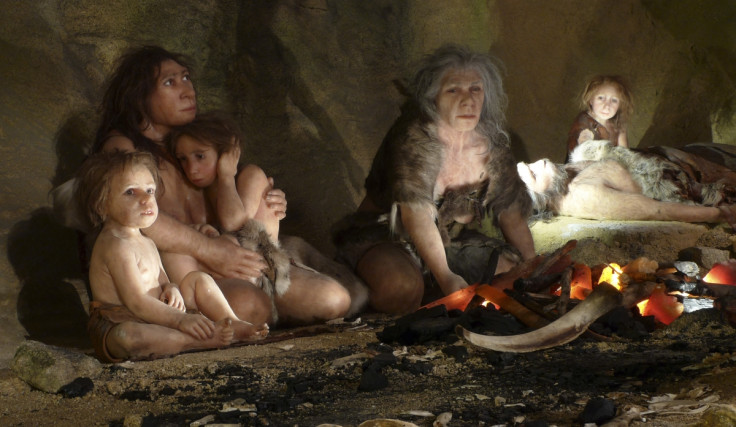Neanderthals' Five-a-Day: Ancient 50,000-Year-Old Faeces Reveal Plant Diet

The popular concept of the Neanderthal as a club-wielding carnivore is too primitive, according to new research, which suggests our prehistoric cousins had a varied diet that included plant tissues such as tubers and nuts.
Scientists from the Massachusetts Institute of Technology and the University of La Laguna in Spain have identified 50,000-year-old human fecal remains from El Salt, a known site of Neanderthal occupation in southern Spain.
The researchers analysed the samples, which the team say may be the oldest known human fecal matter, for metabolised versions of animal-derived cholesterol, as well as phytosterol, a cholesterol-like compound found in plants.
While the samples revealed a meat-heavy diet, two samples showed traces of plants; the first direct evidence that Neanderthals may have enjoyed an omnivorous diet.
"We have passed through different phases in our interpretation of Neanderthals," said Ainara Sistiaga, a student at the University of La Laguna who led the analysis as a visiting student at MIT.
"It's important to understand all aspects of why humanity has come to dominate the planet the way it does," added co-author Roger Summons, a professor of geobiology at MIT. "A lot of that has to do with improved nutrition over time."

While scientists have attempted to reconstruct the Neanderthal diet, much of the evidence has been inconclusive.
Previously, researchers have analysed bone fragments for carbon and nitrogen isotopes, signs that Neanderthals may have consumed certain prey, such as pigs or cows.
However, as the data only differentiates between protein sources, it underestimates plant intake, depicting the Neanderthal as a meat-eater.
Other research recently identified plant microfossils trapped in Neanderthal teeth, which suggests the species may have harvested and cooked different plants in addition to hunting prey.
It is possible, however, that Neanderthals consumed the traces through the stomach contents of their prey, leaving evidence in their teeth.
Sistiaga also put forward another scenario: "Sometimes in prehistoric societies, they used their teeth as tools, biting plants, among other things. We can't assume they were actually eating the plants based on finding microfossils in their teeth."
For a more direct approach, Sistiaga looked for fecal remains in El Salt, an excavation site in Alicante, Spain, where remnants of multiple Neanderthal occupations have been unearthed.
Using geochemical biomarker techniques, Sistiaga then studied the matter for signs of coprostanol, a lipid formed when the gut metabolises cholesterol.
They then determined the proportions of coprostanol, an animal-derived compound, to 5B-stigmastanol, a substance derived from the breakdown of phytosterol derived from plants.
Two samples also held biomarkers of plants, indicating Neanderthals consumed tubers, berries, and nuts fairly regularly.
"We believe Neanderthals probably ate what was available in different situations, seasons, and climates," Sistiaga said.
The team plan to use similar techniques to analyse soil samples in Olduvai Gorge, Tanzania, a 1.8-million-year-old site where some of the earliest evidence of human ancestry have been discovered.
The research was published in PLOS ONE.
© Copyright IBTimes 2025. All rights reserved.






















